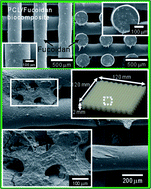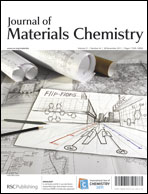Rapid-prototyped PCL/fucoidan composite scaffolds for bone tissue regeneration: design, fabrication, and physical/biological properties
Abstract
Biomedical composite scaffolds consisting of poly(ε-caprolactone) (PCL) and fucoidan (Fu) fabricated by a melt-plotting system can be applied as a potential scaffold for bone tissue regeneration. In this study, the pore size and strut diameter of the layer-by-layer composite scaffolds were fixed at 305 μm and 300 ± 15 μm, respectively, and the effect of various compositions (3, 5, 10, 20 wt%) of fucoidan on the morphology, hydrophilic properties, water-absorption ability, and mechanical characterization of the scaffolds was evaluated. Through the water-contact angle and water-absorption abilities, the composite scaffolds complemented with fucoidan displayed dramatically increased hydrophilic properties and higher mechanical properties (22% increase of Young's modulus at 10 wt% of fucoidan) under limited compositions of fucoidan compared to the pure PCL scaffold. The in vitro biocompatibility of the scaffolds was examined using osteoblast-like-cells (MG63). Specifically, cellular proliferation and mineralization were assessed. Based on scanning electron microscope (SEM) images, the cells more easily adhered and grew on the surface of the PCL/Fu scaffolds, showing a 30% enhanced


 Please wait while we load your content...
Please wait while we load your content...